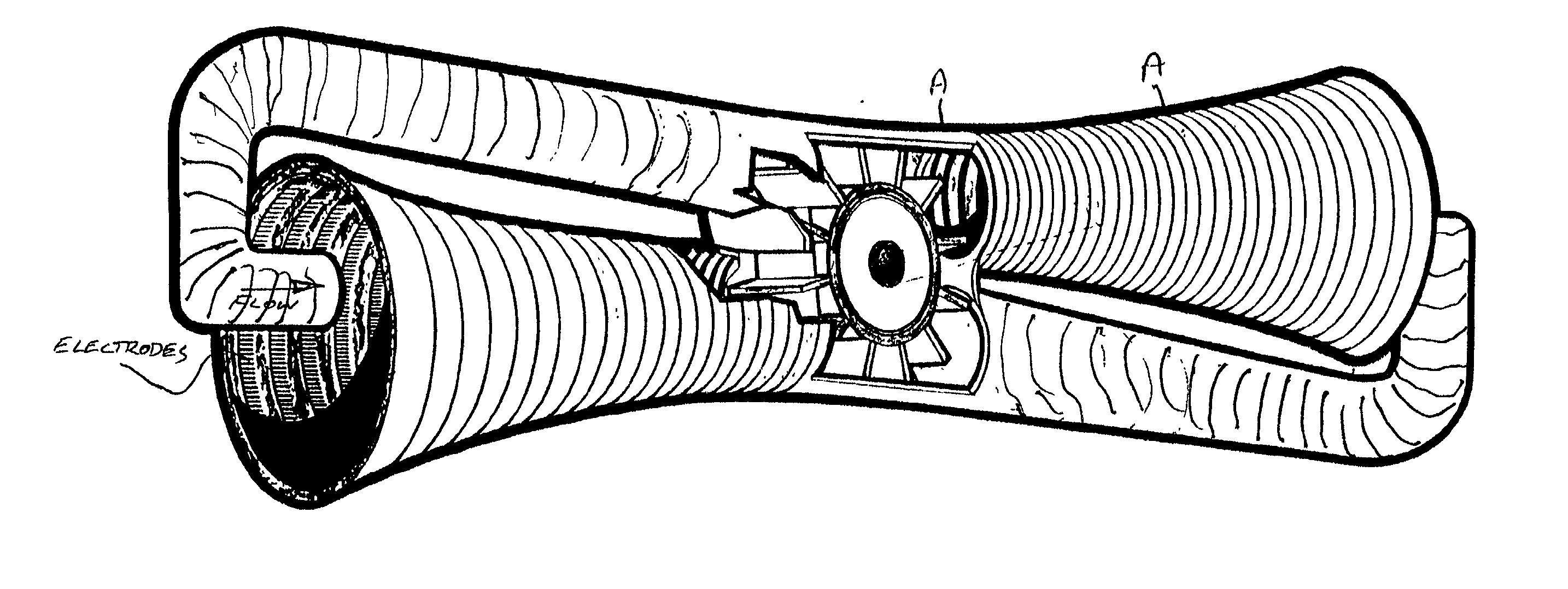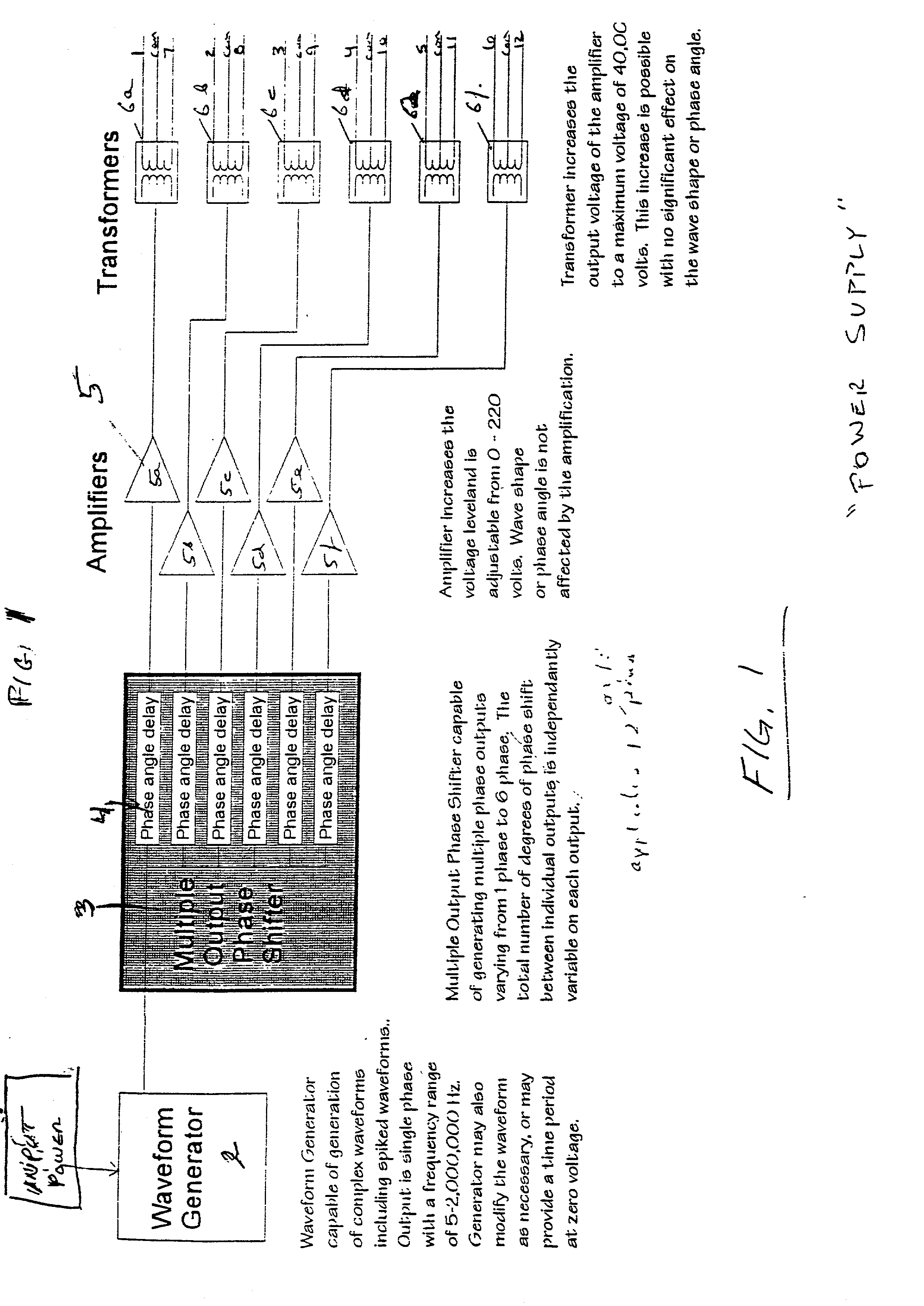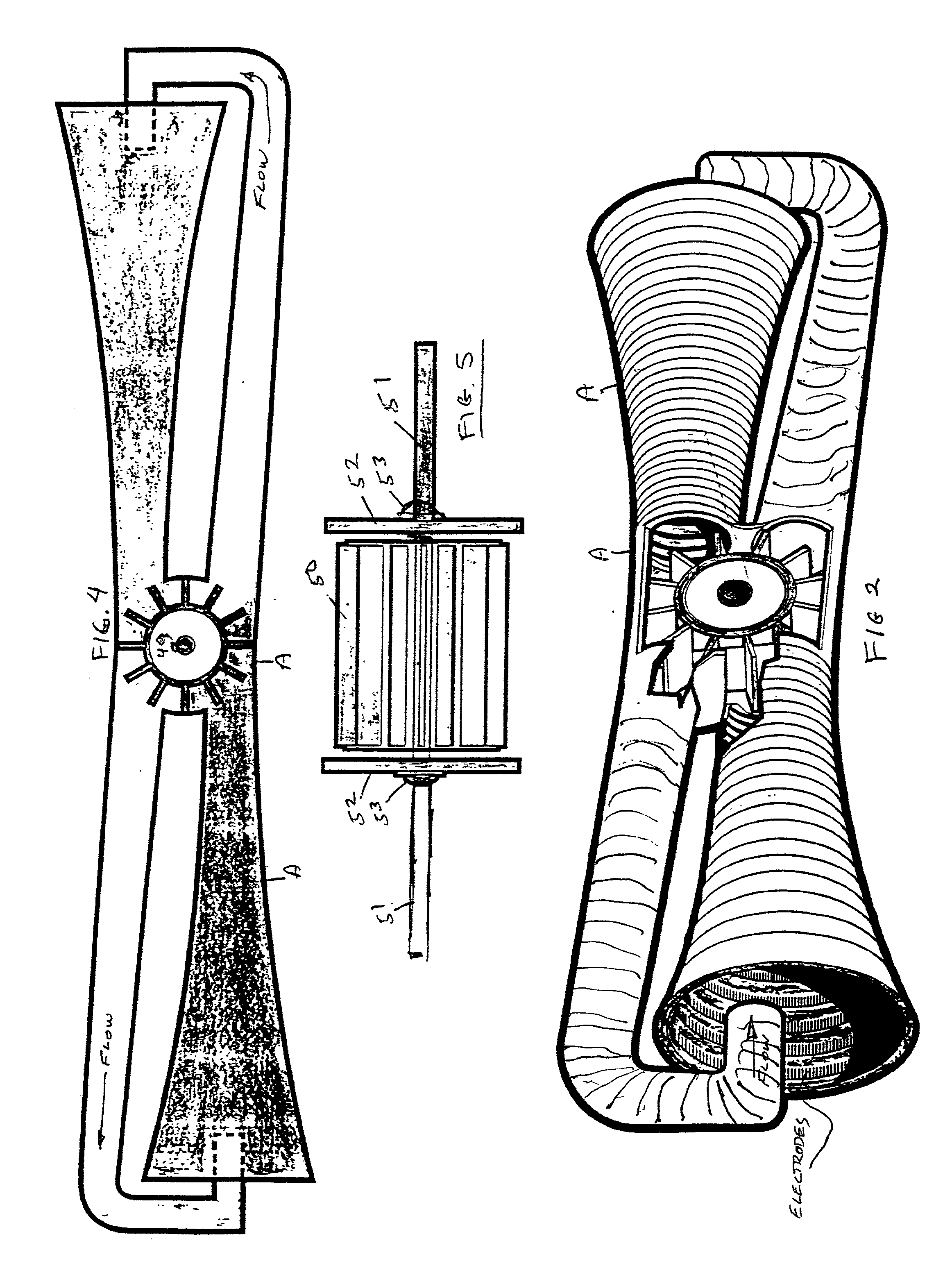Co-probe power generation system
a power generation system and co-probe technology, applied in the direction of electric generator control, renewable energy generation, greenhouse gas reduction, etc., can solve the problems of all conventional fossil-burning utilities, pollution of the earth's atmosphere, damage to the protective ozone layer of the planet at high altitude,
- Summary
- Abstract
- Description
- Claims
- Application Information
AI Technical Summary
Benefits of technology
Problems solved by technology
Method used
Image
Examples
Embodiment Construction
[0054] While the invention will be described and disclosed here in connection with certain preferred embodiments, the description is not intended to limit the invention to the specific embodiments shown and described here, but rather the invention is intended to cover all alternative embodiments and modifications that fall within the spirit and scope of the invention as defined by the claims included herein as well as any equivalents of the disclosed and claimed invention.
[0055] Turning now to FIG. 1 where a block diagram of a new and unique power supply system for use with this invention has been shown. The invention described herein employs a power supply having an alternating potential with periodically changing and timed electric potentials having specified waveforms, a multiple output phase shifter, voltage amplifiers and transformers to further increase the power supply's output voltage. The block diagram illustrated in FIG. 1 is an example of this invention's power supply sys...
PUM
 Login to View More
Login to View More Abstract
Description
Claims
Application Information
 Login to View More
Login to View More - R&D
- Intellectual Property
- Life Sciences
- Materials
- Tech Scout
- Unparalleled Data Quality
- Higher Quality Content
- 60% Fewer Hallucinations
Browse by: Latest US Patents, China's latest patents, Technical Efficacy Thesaurus, Application Domain, Technology Topic, Popular Technical Reports.
© 2025 PatSnap. All rights reserved.Legal|Privacy policy|Modern Slavery Act Transparency Statement|Sitemap|About US| Contact US: help@patsnap.com



